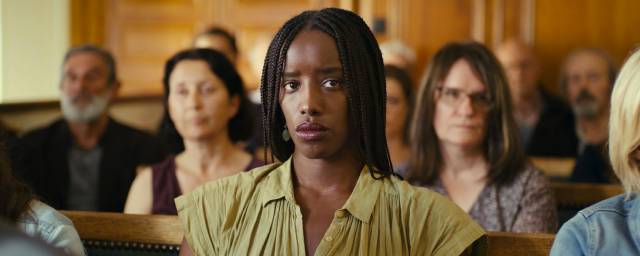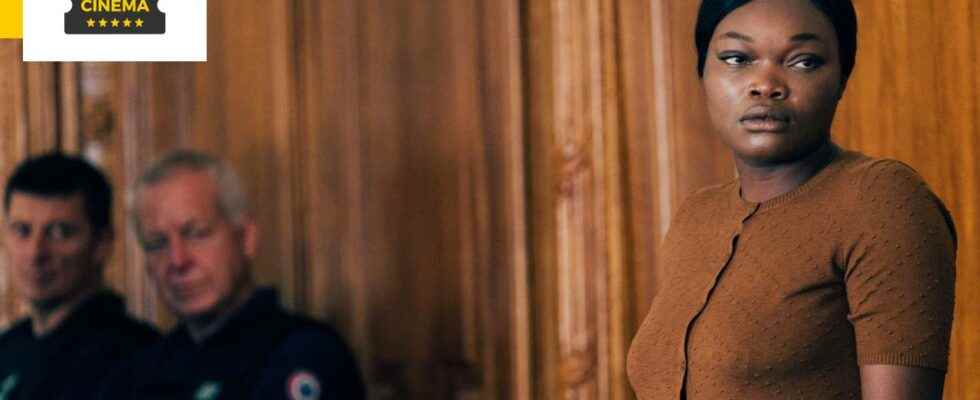This drama, released this Wednesday, is it inspired by a true story? Or is Saint Omer a fiction? Lighting.
Rama, a young novelist, attends the trial of Laurence Coly at the Assize Court of Saint-Omer. The latter is accused of having killed her fifteen-month-old daughter by abandoning her at the rising tide on a beach in northern France. But during the trial, the word of the accused, listening to the testimonies make Rama’s certainties waver and question our judgement.
Saint Omer, released this Wednesday, November 23 at the cinema, and preceded by very good word of mouth (in the running for the Oscars 2023 for France, and twice awarded at the Venice Film Festival). This is the first work of fiction by its director Alice Diop, who has so far distinguished herself in documentaries (César for the short documentary film for Vers la tendresse).
For her first fiction feature, the filmmaker turned to a dramatic true story, which had generated fairly significant media coverage at the time of the events in 2013, then the trial in 2016. This is the Fabienne case Kabou, accused of infanticide on a beach in Berck.
In the film’s press kit and in our podcast below, the director explains that she had the impetus for the film when she saw a photo of this tragic news item, then the whole process of the film project was gradually put in place. .
This photo is of a black woman, captured by a surveillance camera. “Two days before, a baby had been found in Berck-sur-Mer, carried by the waves, at six o’clock in the morning. No one knew who this child was, the investigators originally leaned towards a migrant boat that would have drifted.“
So begins an obsession for this woman
And to add:But very quickly, they had found a stroller hidden in a thicket in Berck-sur-Mer, and from there, by studying the surveillance cameras, they had gone back to this black woman with a mixed-race baby. I look at her and I know she’s Senegalese, I know she’s the same age as me, I know her so well that I recognize myself. Then begins an obsession for this woman. I don’t tell anyone about it, but I follow the investigation almost hour by hour, since all the newspapers are talking about this baby.
SRAB FILMS ARTE FRANCE CINEMA 2022 Guslagie Malanda plays the character of Laurence Coly, freely inspired by the Fabienne Kabou affair
A few days later, we learn that it is indeed a Senegalese woman, Fabienne Kabou, and that she killed her baby by depositing it at high tide on the beach. She has just confessed, I listen to her lawyer, and very quickly the question of witchcraft comes up. I learn that she is a doctoral student, that she is an intellectual, the first comments from journalists underline her exceptional IQ of 150, yet she justifies her gesture by talking about a maraboutage by her aunts in Senegal… For me, something does not stick. I wonder why everyone insists that she speaks extremely well, after all she speaks like an academic…
From the first words that try to tell her story, I hear a whole unthought, a known mechanism is set up, a sum of press and media projections on this woman. The trial takes place in June 2016, and I decide to go. I don’t tell anyone about it. I do not understand this crazy act which consists in going to the trial of a woman who killed her half-breed baby of fifteen months, even though I am also the young mother of a half-breed child.
I talk about it all the same to my producers, who have the intuition that a film is looking for
I talk about it all the same to my producers, who have the intuition that a film is looking for itself. I arrive in Saint-Omer, a completely devastated northern town, where only Marine Le Pen’s campaign posters are not torn. Like the character of Rama at the beginning of the film, I cross the city from the station to the hotel. As I walk I feel eyes on me, people at the window stare at me, people in the street turn away, my suitcase makes an enormous noise on the cobblestones. I feel in danger because seeing what type of white people look at me, I understand that I am the mirror of their downgrading. I am a black woman, dressed like a Parisian, dragging a suitcase, and who is there, in this devastated city, exposed to these downgraded whites…
This thriller or fear film image is somewhere in the film. In any case, I worked from this first feeling. In the hotel room I begin to think of this woman and there I feel the presence of Fabienne Kabou haunting the room. I am facing my limit, a part of myself that scares me: my unavowable obsession for this story… What also made the film very concrete is that I was obsessed with the documentary ritual of Justice. On the last day of the trial, I realized that this little girl had been named. More than named, her complaint had been filed somewhere, she had been seen…“
I couldn’t stand the way Fabienne Kabou was commented on in a number of media
Alice Diop in no way sought to make a pure and simple adaptation of this news item, but rather had the idea of bringing her subjectivity and sensitivity to it. “In Saint Omer, the news item is consumed, digested, spit out through the prism of my intimate history and of this political project which consists in attaching the stories of these women to the mythology which has never been offered to them, to the tragedy which comes to reveal something about ourselves, me and the viewer. Of course, all of this comes from a true story, from documentary material, but what fiction allows is to make it into something that no longer has to do with the story of a single woman, but with all of our history.
Alice Diop wanted to bring another look at the media coverage given to this tragic story: “I couldn’t stand the way Fabienne Kabou was commented on in a number of media, I felt a desire to make him look like a victim, to give his gesture a simplistic, almost folkloric explanation: maraboutage, which attenuated all his violence, all his fire, all his anger, all his revolt, all his ugliness .
For me she is a powerful Medea, and not the poor scorned immigrant. This story does not restore its power, including its most obscure and violent aspects, which I do not judge, but which I wanted to restore to it. For me, correctness and justice is to give back to him — and to give back to us — our complexity. I have rarely seen filmed, written, told the complexity of a black woman. We are always smoothed in a self-righteous gaze, locked in the gaze of those who have the right to tell our own story in our place.”

SRAB FILMS ARTE FRANCE CINEMA 2022
Kayije Kagame plays the role of novelist Rama in Saint Omer
Alice Diop decided to modify the names and therefore add this character of Rama, the novelist who goes to trial, who is in a way a form of Alice Diop’s alter ego, but there too, fictionalized , for the purposes of the film.
“It is the story of Rama which makes it possible to do this, in the identification which it allows the spectator. Without her, without this fictitious character, it would have been only the story of a trivial and tragic incident and the film no better than a cinematographic version of Bring in the accused.“
For the record, Fabienne Kabou went before the Assize Court of Saint-Omer for the murder of minors under the age of 15, in 2016. She was first sentenced to 20 years in prison. After appeal, she obtained, judging the verdict too severe, a reduction in sentence granted to 15 years in prison.
Our podcast interview with director Alice Diop:
Saint Omer by Alice Diop has been in theaters since Wednesday 23 November.
